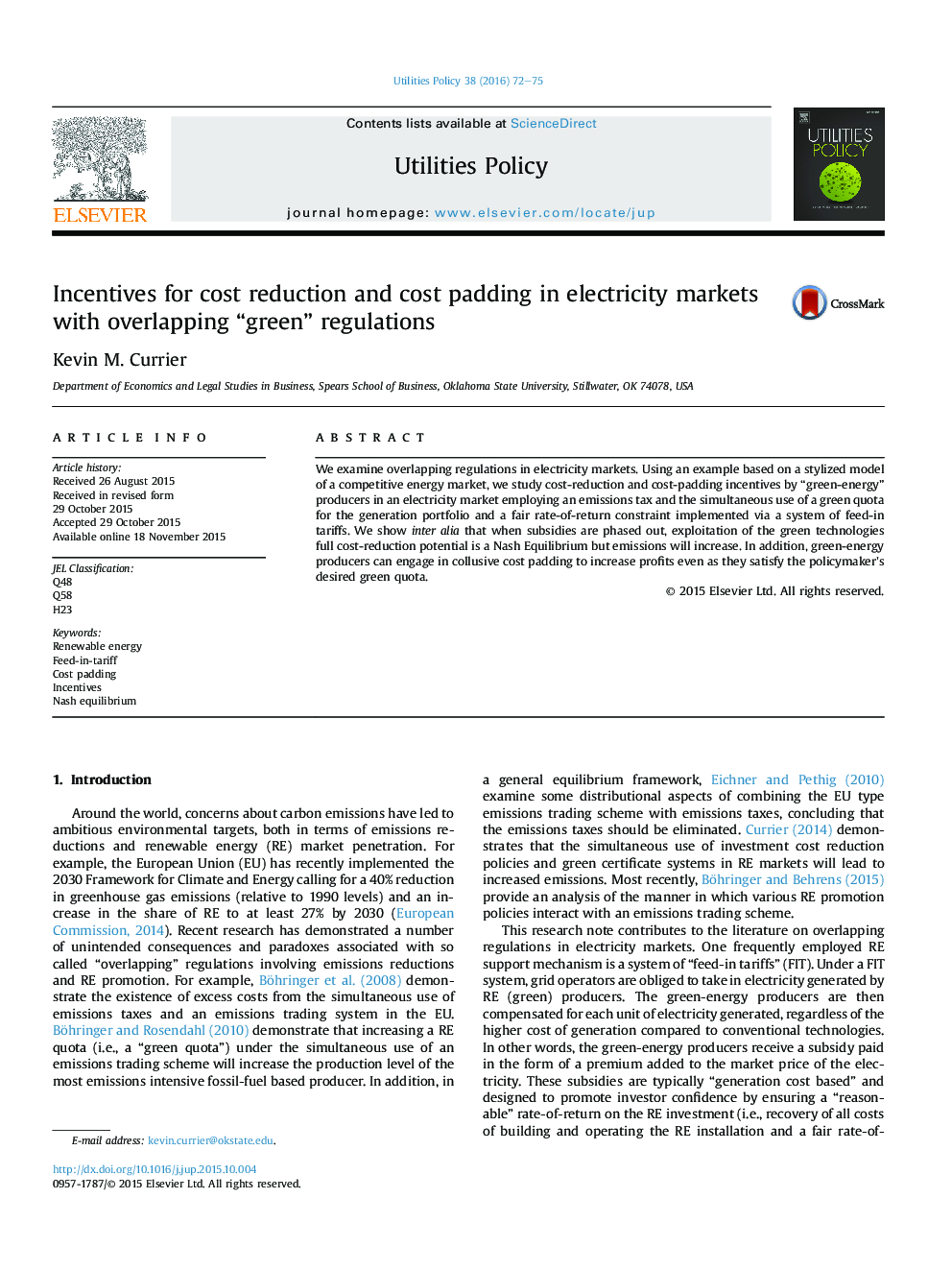| کد مقاله | کد نشریه | سال انتشار | مقاله انگلیسی | نسخه تمام متن |
|---|---|---|---|---|
| 999033 | 1481659 | 2016 | 4 صفحه PDF | دانلود رایگان |
• “Overlapping” regulations can have perverse and unintended effects.
• We study cost reduction incentives facing renewable energy producers.
• Exploitation of full cost reduction potential is a Nash Equilibrium.
• Paradoxically, emissions will increase.
• Cost padding can increase profits while simultaneously maintaining the green quota.
We examine overlapping regulations in electricity markets. Using an example based on a stylized model of a competitive energy market, we study cost-reduction and cost-padding incentives by “green-energy” producers in an electricity market employing an emissions tax and the simultaneous use of a green quota for the generation portfolio and a fair rate-of-return constraint implemented via a system of feed-in tariffs. We show inter alia that when subsidies are phased out, exploitation of the green technologies full cost-reduction potential is a Nash Equilibrium but emissions will increase. In addition, green-energy producers can engage in collusive cost padding to increase profits even as they satisfy the policymaker's desired green quota.
Journal: Utilities Policy - Volume 38, February 2016, Pages 72–75
